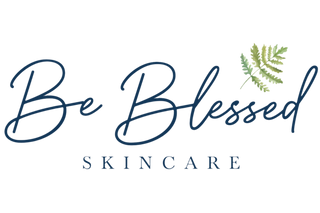Acne is a common skin woe that affects millions of individuals worldwide. While managing active breakouts is challenging, the scars they leave behind can be equally distressing.
In this blog post, we'll dive into the world of acne scars, uncovering how they form, the different types that can plague your skin, and effective topical treatments. We'll also explore professional options for the stubborn ice pick scars and, most importantly, discuss proactive measures to prevent acne scars from forming in the first place.
So, let's embark on this journey towards clearer, more radiant skin with Be Blessed Skincare.
Understanding Acne Scar Formation
Acne scars are the lasting reminders of past battles with acne. They often result from various factors, including:
Picking and Squeezing: The cardinal sin of acne management, picking or squeezing pimples can push infected material deeper into the skin, increasing the risk of scarring.
Sun Damage: Exposure to the sun's harmful UV rays can exacerbate the appearance of acne scars by causing skin pigmentation irregularities.
Inflammatory Responses: Inflammatory acne, especially cystic acne, poses a higher risk of scarring due to the intense skin inflammation it triggers.
Different Types of Acne Scarring
Acne scars come in various forms, including:
Post-Inflammatory Hyperpigmentation (PIH): These are dark marks left behind after acne has healed. They result from an excess production of melanin, the skin's pigment, in response to inflammation.
Post-Inflammatory Erythema (PIE): PIE scars are red or purplish marks left behind due to damaged blood vessels following acne inflammation.
Ice Pick Scars: Ice pick scars are deep, narrow pits that resemble small puncture wounds on the skin's surface.
Topical Treatments for Acne Scars
When it comes to treating acne scars topically, a combination of approaches can yield significant improvements:
Alpha Hydroxy Acids (AHAs): AHAs, such as mandelic and lactic acid, help exfoliate the skin, encouraging the shedding of damaged surface cells and fading discoloration. Brightening Peel Pads and Mandelic Serum 5%
Vitamin C: A potent antioxidant, vitamin C can help suppress melanin production, leading to a reduction in hyperpigmentation. Confident C Glow Serum
Sunscreen: Applying a broad-spectrum sunscreen daily is crucial to protect your skin from UV damage, which can worsen existing scars. TInted Mineral Sunscreen
Hydration: Well-hydrated skin is healthier and better equipped to repair itself. Moisturizing can improve the appearance of scars over time. Hydration Balance and Stem Cell HydraGel
Professional Treatments for Ice Pick Scarring
For those dealing with stubborn ice pick scars, professional treatments may be necessary:
Chemical Peels: Chemical peels use strong acids to exfoliate the skin, encouraging the growth of smoother, scar-reduced skin.
Micro-needling: This minimally invasive procedure uses tiny needles to stimulate collagen production and improve the texture of the skin.
Laser Therapy: Fractional laser treatments can target and resurface damaged skin, reducing the appearance of ice pick scars.
Preventing Acne Scars
Prevention is always better than cure when it comes to acne scars. Here are some key steps to minimize the risk:
Hands Off: Resist the urge to pick or pop your pimples, as this can lead to more severe scarring. I always recommend icing blemishes instead of picking. Ice Roller
Early Treatment: Treat acne promptly to reduce inflammation and minimize the risk of scars forming.
Proper Skincare: Develop a consistent skincare routine with acne-fighting products that suit your skin type.
Acne scars can be a distressing reminder of past skin battles, but with the right knowledge and treatment, you can regain confidence in your complexion.
Be Blessed Skincare is here to support you on your journey to smoother, scar-free skin. Remember, a proactive approach to skincare and professional guidance can make all the difference. Say goodbye to acne scars and hello to a more radiant you!

